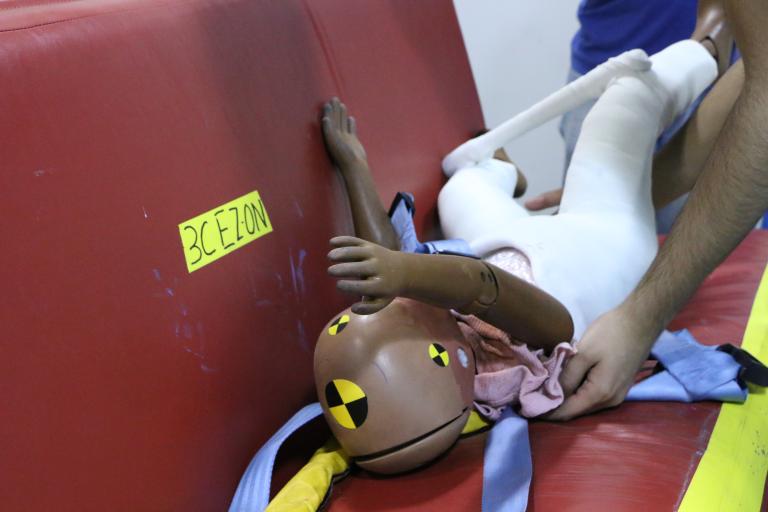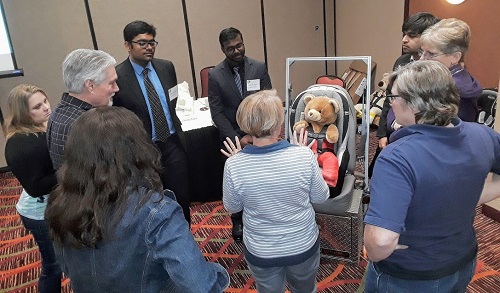
Kettering University faculty members and students and McLaren Health physicians are conducting research to determine how to best transport a child wearing a body cast.
They’ve initially found there’s no clear best seat among the ones they’ve tested, but a car seat is a better method of transport than a harness or booster seat.
During the winter, Mechanical Engineering faculty members Dr. Patrick Atkinson and Dr. Theresa Atkinson; Crash Safety Center Director Dr. Janet Brelin-Fornari; McLaren Flint Orthopedic Surgery residents Dr. Angela Collins, M.D., Ph.D., and Dr. Sean Caskey, D.O.; and Kettering students tested four car seats, one booster seat and one harness at Kettering’s Crash Safety Center.

The team wants data to determine the safest methods for moving young children with physical special needs, such body casts, or hip spica casts. The casts are used to treat pediatric musculoskeletal issues of the hip and thigh. The research team chose to test the Merritt Wallenberg Hip-Cast Car Seat, Britax Parkway SGL G1.1 Belt‑Positioning Booster Seat, diono radian rXT car seat, Graco Nautilus 3-In-1 Car Seat and the EZ-ON 101M2 harness. Only the Merritt seat is made specifically for children in body casts, and many parents use the other seats because children in casts can fit in them. The EZ-ON harness is for children with special needs and has been recommended for children in spica casts, Collins said, but there is no data to show it’s a safe way to transport children. The researchers conducted frontal- and side-impact tests with a casted child dummy. None of the manufacturers tested the seats with casted dummies.
After testing and data analysis of the frontal-impact tests, the team found car seats are better than an alternative, and there’s no best choice among the car seats. The team drew several conclusions from the data and made recommendations for parents and physicians.
The best-fitting seat depends on the casting, Collins said. The harness tested well, but the results were misleading because they couldn’t measure facial fractures, and the dummy’s arm and shoulder were violently flung against the bench seat in the tests.
Kettering graduate students Sushant Jagtap ‘19 and Yugal Narang ‘19 also participated in the research and drew their own conclusions from the data. They found the commercial seats are the safest, although they can still cause neck injuries to the children. The lower part of the body is constrained because of the cast, and the force goes up through the body and injures the neck, Jagtap said.
Although there is no best seat, Collins said the team likes the $180 diono radian rXT car seat, which has an adjustable crotch strap to children can be more easily secured and is commercially available at a reasonable price. They also recommend physicians cut out a piece in the front of the cast so a child’s chin doesn’t hit the cast. If options other than the car seats fail, they would recommend the parents use the harness or call an ambulance for transportation.
“We got a really good chance to work on this project. In three months, we got to learn very much,” Narang said.